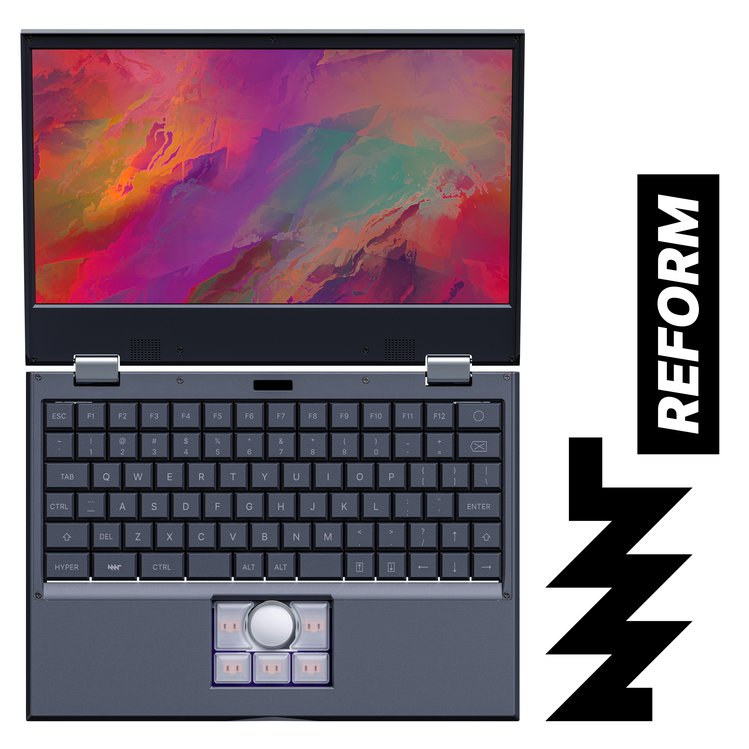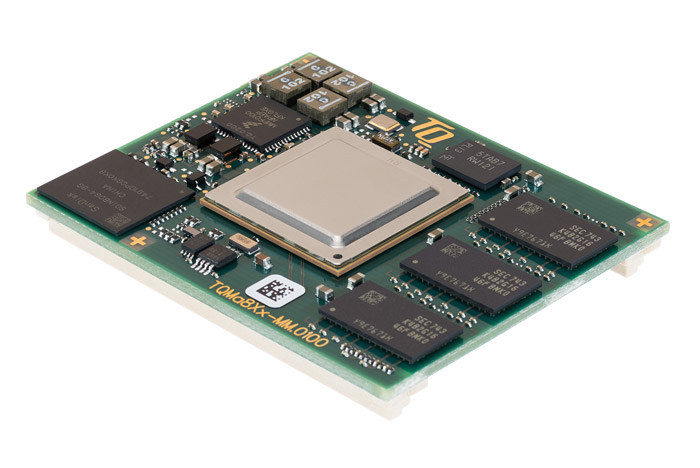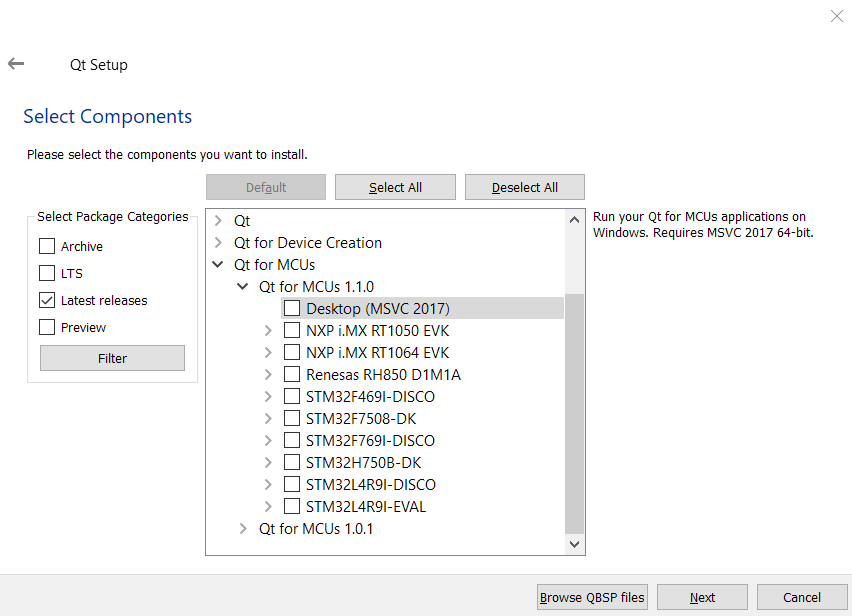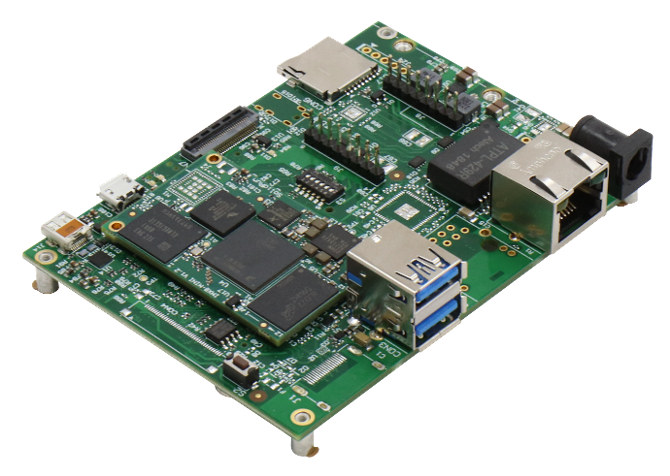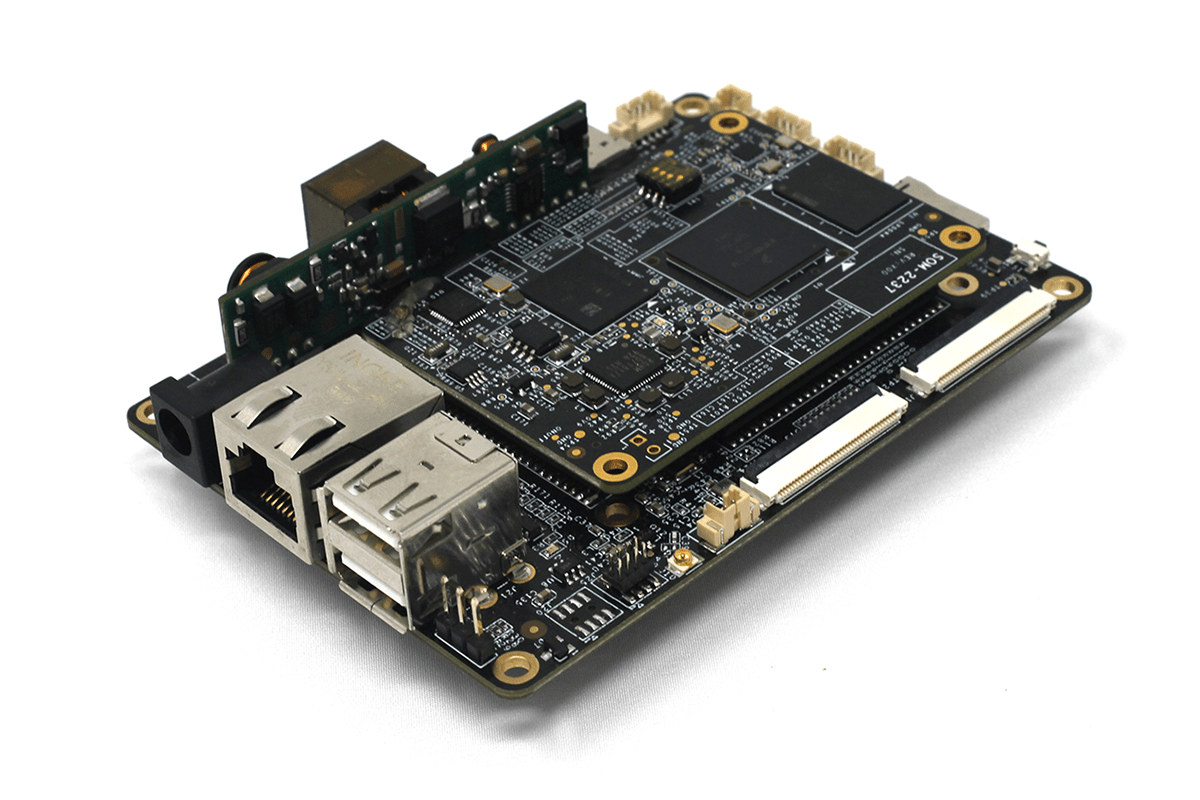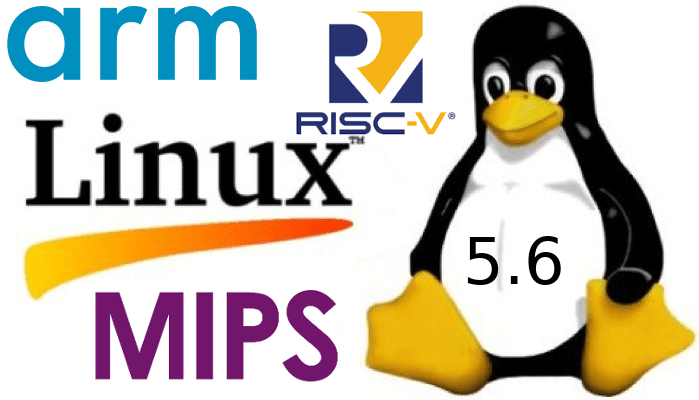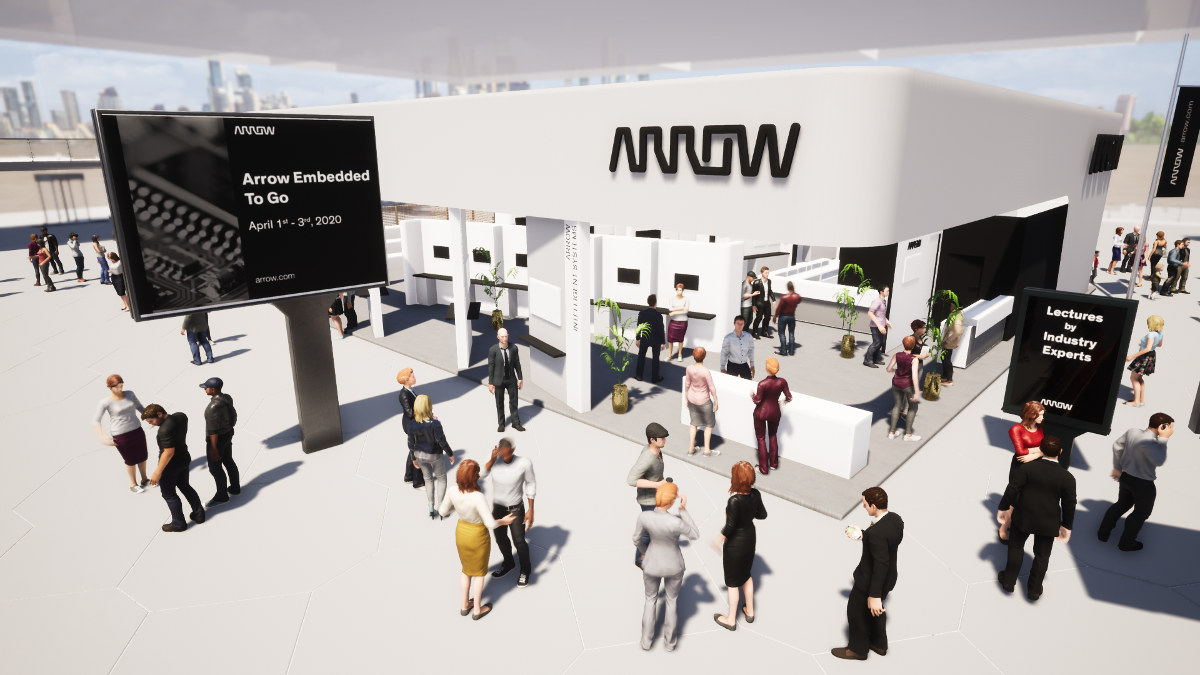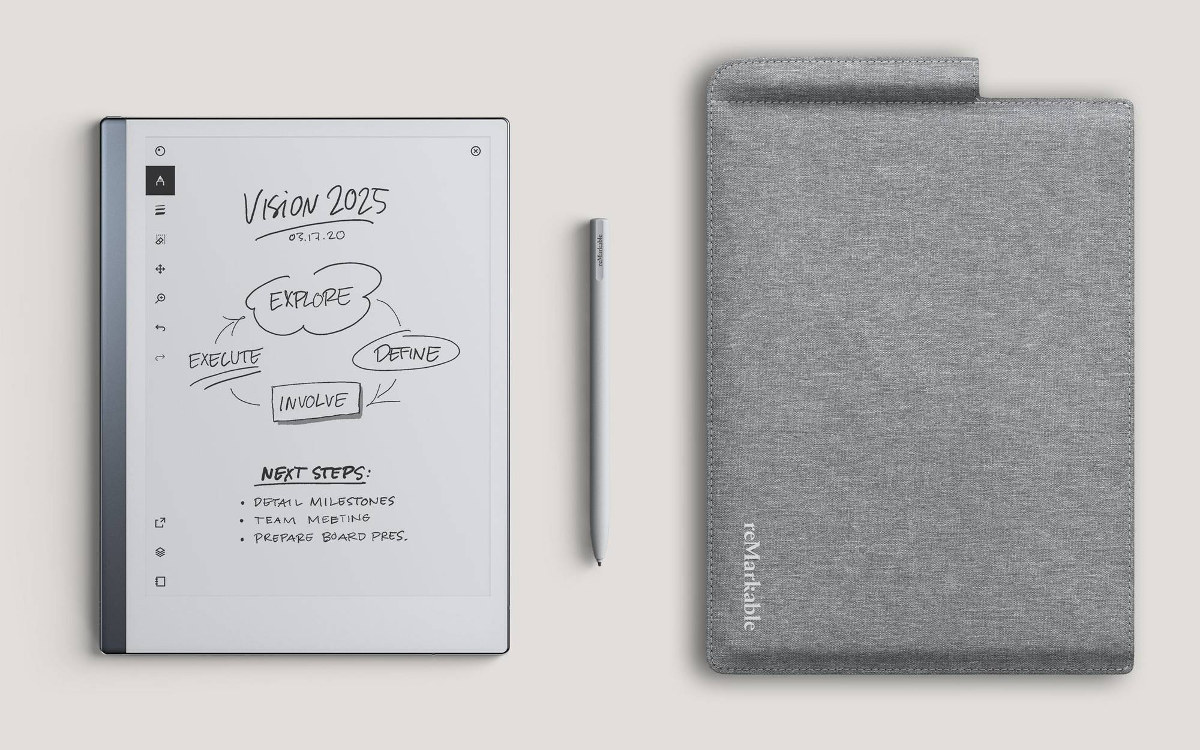MNT Reform DIY Arm Linux laptop has been in the works at least since 2017. The open source hardware laptop is also fully modular with Boundary Devices Nitrogen8M SoM featuring NXP i.MX 8M quad-core Cortex-A53 processor and 4GB RAM, M.2 NVMe SSD storage, and standard, replaceable 18650 batteries. The good news is the laptop is now almost ready for prime-time and has been launched on Crowd Supply with price starting at $999 in DIY kit form without storage, and $1,300 for a complete, assembled system with 256GB NVMe storage. If you don’t have that amount of money to spend, but would like to support the project, a $40 MNT Reform T-shirt is also offered. Alternatively, the motherboard only goes for $550. Here’s a reminder of MNT Reform specification: SoM – Boundary Devices Nitrogen8M SoC – NXP i.MX 8MQuad quad-core Cortex-A53 processor @ 1.5 GHz, 1x Arm Cortex-M4F real-time core Vivante […]
TQ Group Announces NXP i.MX 8X ARM Cortex-A35 Modules as the Processor Finally Becomes Available
TQ Group, headquartered in Germany, has launched two NXP i.MX 8X Cortex-A35 modules with TQMa8Xx and TQMa8XxS SoMs, with the latter being SMARC 2.1 compliant, and both targeting various applications ranging from medical devices, HMIs, industrial controllers and industrial Internet of Things (IIoT) to gateways, building automation, transport, and robotics. The press release explains NXP will officially launch i.MX 8X CPUs on May 14, 2020. We first heard about i.MX 8X in 2016, before an official announcement in 2017, and we wrote about Toradex i.MX 8X SoM in 2018, plus 96Boards AI-ML SBC in 2019, so I naively believed the processor had been around for a couple of years, but the Toradex SoM product is still shown as an “early product announcement” [Update: the page has just been updated since it is now shipping as well], and AI-ML board has just launched with 26 units available on Arrow website. Some […]
Qt for MCUs 1.1 Adds Support for more STM32 and NXP i.MX RT Boards, FreeRTOS
The first stable version of Qt for MCUs was released in August 2019 in order to bring Qt graphical toolkit to microcontrollers such as STMicro STM32F7, Renesas RH850, or NXP i.MX RT1050. Qt for MCUs would run bare metal on supported boards, and software engineers would develop graphical interface using QML and C++. Qt for MCUs 1.1 has just been released with the addition of more STM32 and i.MX RT boards, support for FreeRTOS real-time operating system, and more. Qt for MCUs 1.1 highlights: Five new supported boards: NXP i.MX RT 1064 EVK, STM32 H750B-DK, STM32 F469i-disco, STM32 L4R9i-disco, and STM32 L4R9i-eval Asset management Optional PNG compressions for assets to lower storage footprint Option to read data directly from flash memory for lower RAM consumption, or copy to RAM for better performance, at the cost of higher RAM consumption. FreeRTOS support (technology preview) to run background tasks without blocking the […]
HummingBoard Ripple SBC Targets AI Applications with NXP i.MX 8M Mini SoC & Gyrfalcon Lightspeeur 2803S NPU
SoliRun has made good use of its i.MX 8M Mini SoM which – as its name does not imply – comes with both an NXP i.MX 8M Mini processor and Gyrfalcon Lightspeeur 2803S AI accelerator, and can now be found in HummingBoard Ripple SBC part of the new HummingBoard-M family and based on a cost-reduced version of HummingBoard Pulse baseboard which we covered in 2018. Note that HummingBoard Ripple board is also available with the earlier SoliRun i.MX 8M module, and comes with up to 4GB RAM, Gigabit Ethernet, USB 3.0, Micro HDMI. Compared to HummingBoard Pulse SBC, it does without MIPI-DSI nor digital audio, and removing one Gigabit Ethernet port, and one MIPI-CSI connector. HummingBoard Ripple SBC specifications: SOM Model NXP i.MX8M dual-/quad-core Arm Cortex A53 processor up to 1.5GHz with Arm M4 MCU core NXP i.MX8M Mini single to quad-core Arm Cortex A53 processor up to 1.8GHz with […]
NXP i.MX 8M Mini Pico-ITX SBC Comes with Audio DSP, Optional PoE and Google Coral M.2 Module
We’ve covered several NXP i.MX 8M Mini SBC‘s since the announcement of the processor in 2018 as the first i.MX SoC manufactured with a 14nm process allowing for a higher CPU clock of 2.0 GHz compared to the 1.5 GHz frequency used with the original i.MX 8M processor. i.MX 8M Mini also removes some features (4K video playback, some video interfaces, …) in order to lower the cost of the processor. Companies are still releasing new i.MX 8M SBCs regularly, but we don’t always cover them all since many often do not offer much compared to the competition. But Estone Technology EMB-2237-AI Pico-ITX SBC has some unusual features and options including a Cirrus Logic audio DSP, as well as support for a PoE module and Google Coral M.2 AI accelerator module. EMB-2237-AI SBC is comprised of a system-on-module and baseboard with the following specifications: Estone SOM-2237 module SoC – […]
Linux 5.6 Release – Main Changes, Arm, MIPS & RISC-V Architectures
Linus Torvalds has just announced the release of Linux 5.6 on the Linux Kernel Mailing List: So I’ll admit to vacillating between doing this 5.6 release and doing another -rc. This has a bit more changes than I’d like, but they are mostly from davem’s networking fixes pulls, and David feels comfy with them. And I looked over the diff, and none of it looks scary. It’s just slightly more than I’d have preferred at this stage – not doesn’t really seem worth delaying a release over. So about half the diff from the final week is network driver fixlets, and some minor core networking fixes. Another 20% is tooling – mostly bpf and netfilter selftests (but also some perf work). The rest is “misc” – mostly random drivers (gpio, rdma, input) and DTS files. With a smattering of fixes elsewhere (a couple of afs fixes, some vm fixes, etc). […]
Arrow Embedded To Go Free Online Conference, and 3,000 Development Boards Giveaway
With the coronavirus outbreak on-going, many events are either canceled or moving online. Arrow Electronics has now announced what appears to be a completely new online event. Embedded To Go virtual technology exhibition for embedded systems will take place on April 1-3, 2020, and offer technical presentations, information on newly launched technology, and access to Arrow’s sales and engineering teams. The event will entirely free to attend, and you can register online today with a company’s email address. The event will start in about 10 days by so far the virtual “booth map”, “supplier guide” and “lecture area” are inaccessible. We only know what the event should consist of thanks to an article on EENew Embedded: Technical presentation webinars will be hosted by leading suppliers covering AI, IoT and Edge computing, precision measurement, high-performance computing, intelligent condition-based monitoring, and other technological subjects. Information will also be available in the form […]
reMarkable 2 is a $399 e-Paper Tablet with Pressure Sensitive Pen
reMarkable digital notepad and e-reader was unveiled in 2016, and designed to feel like using actual paper sheets. The device came with a single-core Cortex-A9 processor, a 10.3″ E-Ink display with 1872×1404 resolution, and WiFi connectivity to backup your notes and/or drawings to the cloud or mobile phone. The company is now back with reMarkable 2 e-Paper tablet equipped with a faster and more efficient dual-core Cortex-A7 processor, 1GB RAM, a second-generation CANVAS 10.3″ e-Paper display with the same 1872×1404 resolution but lower latency. The second-generation e-Paper tablet also benefits from a thinner design and much-improved battery life. reMarkable 2 specifications: SoC – Dual-core Arm processor @ 1.2 GHz (possibly NXP i.MX 7Dual processor) System Memory – 1GB LPDDR3 RAM Storage – 8GB internal storage good for around 100,000 pages Display – 10.3″ monochrome digital paper “CANVAS” capacitive touch display partially based on E-Ink Carta technology with 1872×1404 resolution (226 […]


